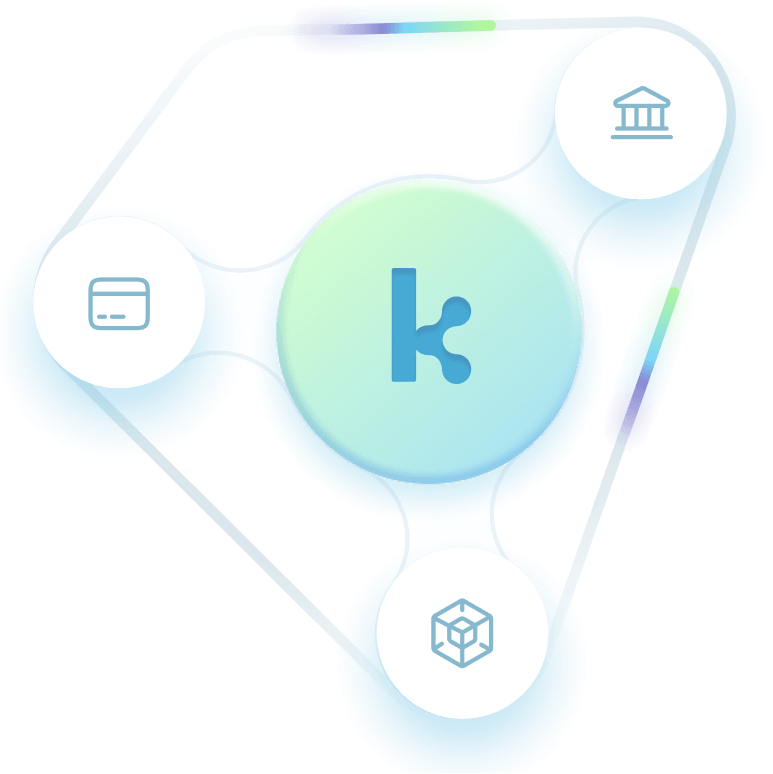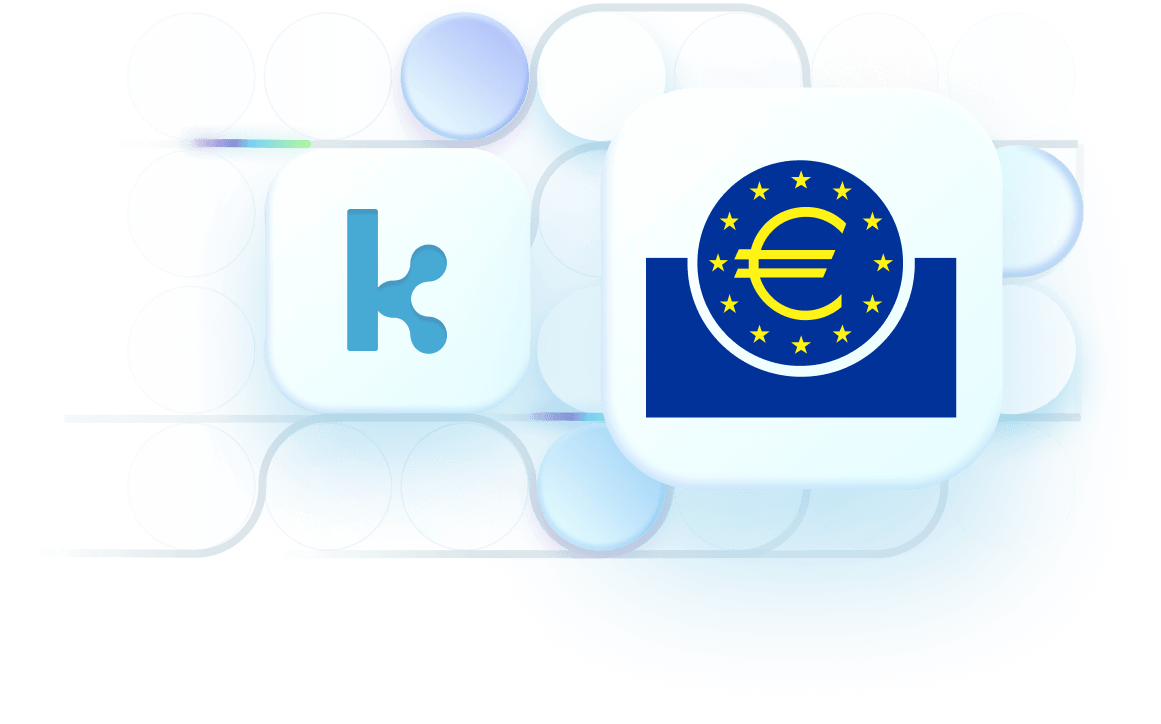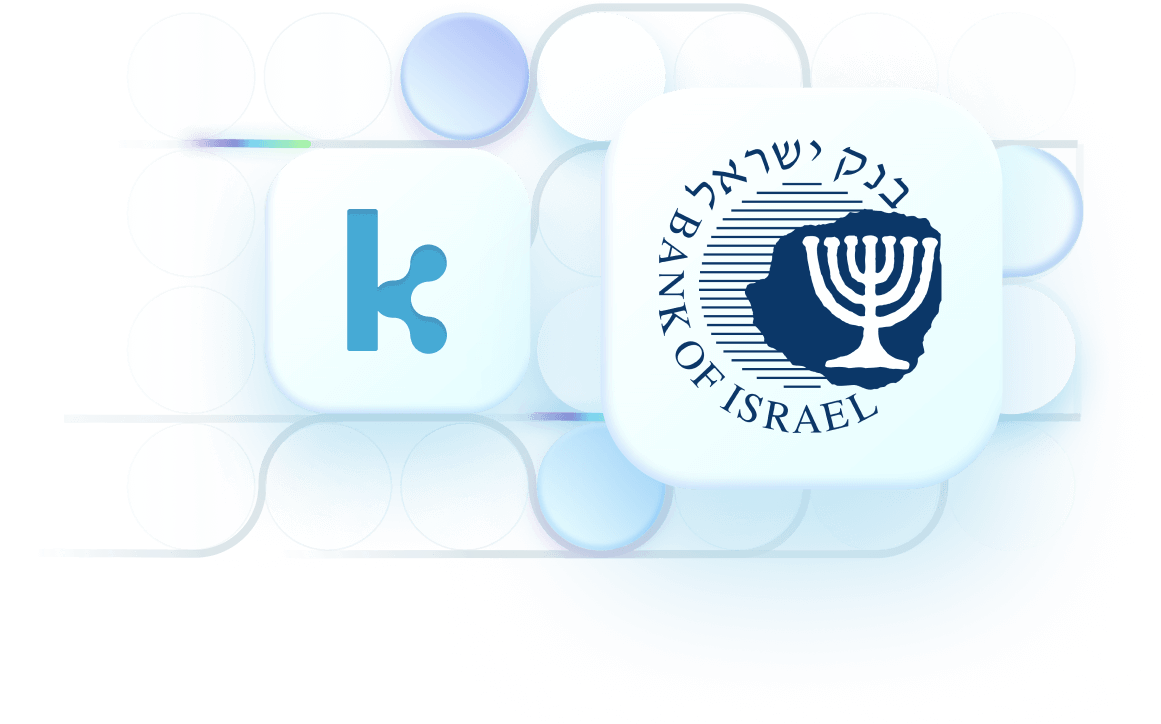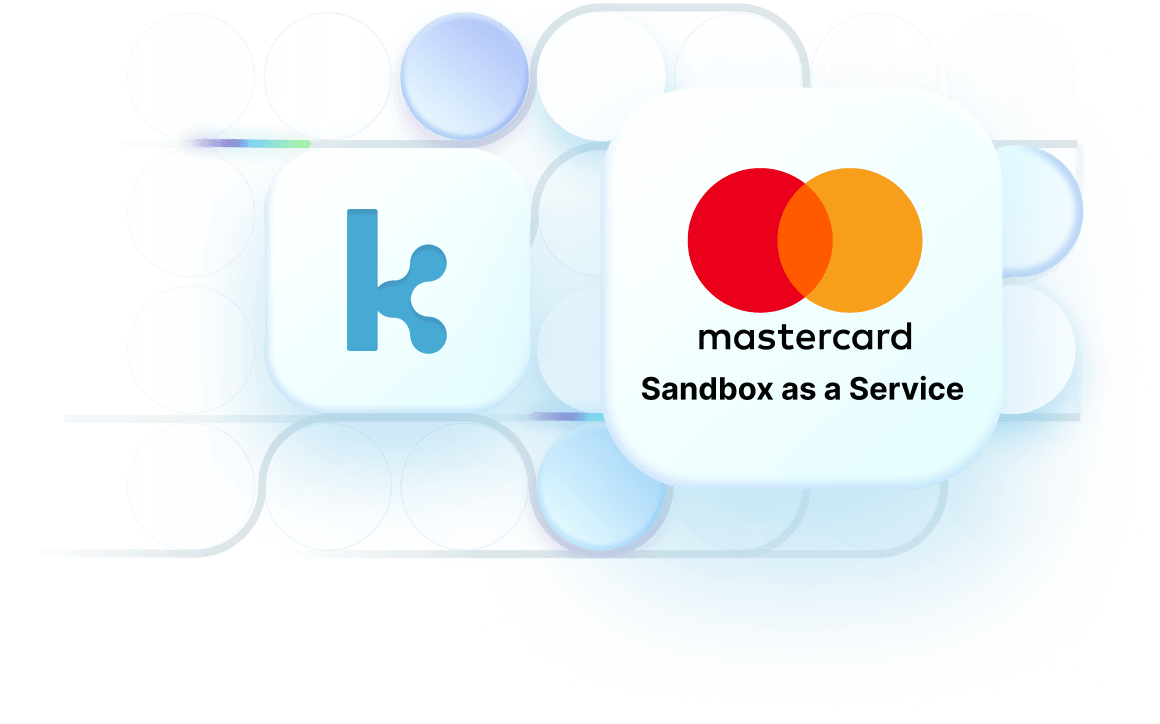Settlement is Still the Weakest Link
While transactions go digital, settlement remains fragmented, delayed, and dependent on costly intermediaries. Compliance is siloed. Liquidity is trapped. And true interoperability is an illusion.
Settlement is Still the Weakest Link
While transactions go digital, settlement remains fragmented, delayed, and dependent on costly intermediaries. Compliance is siloed. Liquidity is trapped. And true interoperability is an illusion.
Kima Powers Secure, Cross-Ecosystem Settlement
Our universal settlement infrastructure eliminates fragmentation with a single atomic rail across any asset class or ecosystem. It is the first atomic settlement layer that connects traditional and digital assets, across fiat, stablecoins, CBDCs, and tokenized deposits. Built for regulated institutions, it enforces compliance, removes intermediaries, and finalizes transfers in a single secure hop. Kima replaces intermediaries with a single DLT-based infrastructure for cross-ecosystem settlement, connecting directly to your traditional systems, wallets, and accounts.
Kima Powers Secure, Cross-Ecosystem Settlement
Our universal settlement infrastructure eliminates fragmentation with a single atomic rail across any asset class or ecosystem. It is the first atomic settlement layer that connects traditional and digital assets, across fiat, stablecoins, CBDCs, and tokenized deposits. Built for regulated institutions, it enforces compliance, removes intermediaries, and finalizes transfers in a single secure hop. Kima replaces intermediaries with a single DLT-based infrastructure for cross-ecosystem settlement, connecting directly to your traditional systems, wallets, and accounts.
Use Cases
Universal Payment Rail (UPR)
Instant, atomic transfers across stablecoins, fiat, and CBDCs

Universal Payment Rail (UPR)
Instant, atomic transfers across stablecoins, fiat, and CBDCs
The Universal Payment Rail (UPR) is designed to simplify and optimize money transfers across different currencies and platforms. It serves as a fundamental transfer protocol with added connectivity to bank accounts, bridging traditional finance (Web2) with blockchain networks (Web3). UPR provides a single API for seamless fund transfers, whether cross-chain, on/off ramps, or fiat-to-fiat. It unifies global payment systems, facilitating smooth and efficient money transfers. Think of it as a global network linking every bank account and digital wallet worldwide.
Key Features:
Multi-Currency Support
UPR supports a broad range of currencies, including major ones like the Euro and Dollar. On the crypto side, it covers stablecoins across nine blockchains, including tokenized deposits and CBDCs on private, permissioned chains, ensuring expansive global reach and functionality. No other solution offers this level of comprehensive support.
Integration with Bank Accounts and Payment Infrastructure
UPR seamlessly connects decentralized financial protocols with traditional banking systems for cross-ecosystem transactions. This integration enables fiat on- and off-ramps, supporting seamless transfers between bank accounts and blockchain networks. Kima’s solution enhances interoperability, making it easy for businesses and consumers to move between fiat and digital currencies, without needing complex third-party solutions. This ensures a smoother user experience, reduced friction, and faster settlements in both domestic and international payments.
Blockchain and DLT Connectivity
UPR bridges public and private blockchain networks. It supports both permissioned and permissionless systems, fostering interoperability in the digital asset space.
Versatile Asset Handling
UPR supports a wide range of asset types, offering unparalleled versatility in handling both digital and fiat currencies. This allows users to perform transactions across multiple ecosystems, seamlessly switching between assets like stablecoins, cryptocurrencies, CBDCs, and traditional fiat currencies.
Enhanced Security and Efficiency
By avoiding the use of smart contracts, Kima significantly reduces the risk of vulnerabilities, such as bugs, exploits, and attacks, which are common in the DeFi space. UPR streamlines the transaction process, reducing the number of steps and interactions typically required in traditional smart contract-based swaps. This simplicity leads to faster, more efficient transactions with lower fees, improving the overall user experience while maintaining robust security standards.
Benefits:
Global Reach
Facilitate international transactions with ease, enabling businesses and individuals to transact across borders without the traditional complexities and delays.
Innovative Integration
Combine the reliability of traditional financial systems with the disruptive potential of blockchain technologies, paving the way for innovative financial solutions.
Flexibility and Adaptability
Cater to a diverse range of currencies and assets, providing a versatile solution that can adapt to various financial needs and market conditions.
Enhanced User Experience
Simplify the payment process for users by integrating multiple payment systems into a single, cohesive network.
Real-Time Liquidity Routing
Optimize flow across chains and rails in milliseconds

Real-Time Liquidity Routing
Optimize flow across chains and rails in milliseconds
Liquidity as a Service (LaaS) is a solution designed to simplify and optimize liquidity management for businesses, financial institutions, and decentralized ecosystems. By offering access to a decentralized network of liquidity providers, LaaS enables seamless transactions across various financial networks, ensuring that liquidity is readily available where and when it’s needed. LaaS offers infrastructure that facilitates the movement of liquidity across ecosystems, bridging fiat, stablecoins, and other digital assets without maintaining large reserves of assets.
How LaaS Works:
LaaS uses a decentralized infrastructure to pool liquidity from various sources. When a business or financial institution needs liquidity for a transaction, the LaaS provider allocates funds from the pool, enabling instant and secure settlements. By doing so, it eliminates the need for businesses to hold large sums of money in reserve across multiple platforms.
Key Features:
Multi-Asset and Multi-Chain Liquidity
LaaS provides a single point of connectivity, offering access to liquidity from a wide range of assets and blockchain networks, eliminating the need for bridging between assets. This unified access simplifies the management of assets across different platforms and enhances overall operational efficiency.
Reduced asset and operational risks
By outsourcing liquidity management and integrating traditional fiat currencies, LaaS reduces the operational burden on exchanges, leading to narrower spreads and reduced asset and operational risks.
Regulatory Compliance
LaaS integrates on-chain KYT (Know Your Transaction) and AML (Anti-Money Laundering) checks, ensuring that all transactions adhere to regulatory standards while maintaining the highest levels of security and integrity.
User Experience Enhancement
By simplifying the process of accessing and managing liquidity across various chains, LaaS reduces user friction and boosts transaction volume, delivering a smoother and more efficient trading experience.
Benefits:
Expanded Liquidity Access
Businesses can now tap into liquidity from blockchain networks that were previously unsupported, broadening their reach and market participation.
Operational Streamlining
The integration of fiat and digital asset liquidity in a single platform reduces complexity, lowers costs, and enhances operational efficiency, resulting in narrower spreads.
Risk Reduction
Outsourcing liquidity management minimizes the risks associated with handling assets across multiple chains and reduces overall operational risk.
Regulatory Assurance
With on-chain KYC and AML checks, exchanges can operate with confidence, knowing they meet stringent regulatory requirements.
Improved User Experience
By simplifying access to diverse liquidity sources, LaaS reduces friction for users, leading to increased trading volumes and a more robust marketplace.
Delivery-Backed Settlement (DvP)
Guaranteed value-for-value clearing, no intermediaries

Delivery-Backed Settlement (DvP)
Guaranteed value-for-value clearing, no intermediaries
Kima’s Delivery vs Payment (DvP) Mechanism is a cutting-edge method for settling Real World Assets (RWA) on-chain. It enables buyers and sellers to exchange ownership through a single, secure, and atomic transaction. Unlike traditional systems that depend on central authorities or complex smart contracts, Kima’s DvP uses decentralized escrow accounts, eliminating the need for trusted intermediaries and mitigating man-in-the-middle risks.
This decentralized escrow ensures that transactions only occur when both parties meet their conditions, significantly reducing counterparty risk.
As the Bank of Israel explores use cases for utilizing Central Bank Digital Currency (CBDC), Kima was selected to participate in the challenge. Kima implemented a secure mechanism for peer-to-peer settlement of tokenized RWAs, using the Digital Shekel and fiat Shekel seamlessly, bridging digital and traditional currencies without the need for a central intermediary.
Key Features:
Real-Time Settlements
Kima enables real-time settlement of transactions, allowing assets and payments to be exchanged instantly between parties. This reduces delays in processing, enhances liquidity by freeing up funds immediately, and minimizes counterparty risks, as both parties fulfill their obligations simultaneously.
Decentralized Escrow Accounts
These accounts enable secure, trustless transactions through atomic swaps, ensuring that assets are exchanged between parties only when both sides meet their agreed-upon conditions. Unlike traditional escrow systems, which require a trusted third party to oversee and execute the transaction, decentralized escrow accounts remove the need for intermediaries.
This approach reduces costs, minimizes the risk of manipulation, and eliminates any “man-in-the-middle” vulnerabilities. Kima’s decentralized escrow accounts offer a more efficient and secure alternative to traditional methods, ensuring transparency, reducing counterparty risk, and improving the overall transaction experience.
Interoperability with Blockchain Networks
Kima facilitates seamless cross-chain transactions across a variety of blockchain networks, enabling real-time settlements of tokenized assets without being restricted to a single blockchain ecosystem.
This interoperability allows businesses and financial institutions to conduct transactions involving multiple digital assets and currencies. By bridging these networks, Kima’s DvP solution offers broader market access, increasing liquidity options and expanding market opportunities. Additionally, it provides businesses with the flexibility to settle transactions in both digital and fiat currencies, enhancing the usability of the DvP mechanism across the traditional ecosystem.
Seamless Integration
Kima’s DvP product integrates effortlessly with different blockchain networks, making it an ideal solution for businesses that operate across multiple digital asset ecosystems. This simplifies operations and reduces the complexity of managing various networks.
Enhanced Security and Transparency
Kima’s DvP reduces risks associated with centralized systems by eliminating potential single points of failure, ensuring a more secure and resilient transaction process. Additionally, every transaction is recorded on the blockchain, providing a transparent, immutable ledger that can be audited in real-time, enhancing overall trust and accountability.
Benefits:
Reduced Counterparty and Intermediation Risks
Kima mitigates counterparty risk by ensuring that assets and payments are exchanged simultaneously through atomic swaps. By removing intermediaries and utilizing decentralized escrow accounts, Kima also eliminates the risk of third-party manipulation or failure. This creates a secure, trustless environment where transactions are settled reliably and efficiently.
Streamlined Transaction Lifecycle
Simplify and expedite the entire transaction process, from initiation to settlement, reducing operational complexity.
Seamless Multi-Asset Transactions
Connect easily with both fiat and digital assets, including stablecoins and tokenized assets, ensuring versatile and compliant value transfer.
Enhanced Liquidity
Real-time settlements and support for secondary market trading boost liquidity and market participation.
Robust Security and Traceability
Blockchain-based transaction records provide an immutable and transparent audit trail, enhancing trust and security.
Secure DLT-API Integration
Direct access to backend systems, with end-to-end compliance

Secure DLT-API Integration
Direct access to backend systems, with end-to-end compliance
The Universal Message Conduit (UMC) is a cutting-edge solution designed to enable secure, seamless data exchange between traditional (Web2) and decentralized (Web3) systems. UMC ensures the confidentiality and integrity of sensitive data transfers through encryption, while also facilitating the exchange of non-sensitive, open data. With zero-knowledge proof (ZKP) integration, UMC supports privacy-enhanced workflows, allowing data validation without revealing underlying information. Additionally, UMC performs attestation services for critical use cases like supply chain verification and regulatory compliance, and it provides secure API write actions to bridge Web2 infrastructure with decentralized networks. Its multi-layered security approach safeguards data vaults with encryption, role-based access control, and blockchain-based record-keeping, ensuring robust protection against cyber threats.
Key Features:
Secure Data Transfer
UMC facilitates the secure transfer of sensitive data, including encrypted user data, ensuring confidentiality and integrity. It also manages the exchange of non-sensitive, open data across web2 and web3 systems, serving as a bridge between traditional and decentralized networks.
Zero-Knowledge Proof Integration
Acting as a secure channel for zero-knowledge proof (ZKP) transfers, UMC enables confidential computing workflows, enhancing privacy and security in data transactions. Data can be validated without exposing underlying information.
Attestation Operations
UMC performs attestation services for various use cases, such as supply chain verification and regulatory compliance. It ensures that verifications and data exchanged across parties is reliable and trustworthy without the need for a trusted 3rd party.
Web2 API Write Actions
UMC provides the capability to invoke APIs that write data, facilitating seamless integration with existing web2 infrastructure. This ensures that traditional systems can interact effortlessly with modern decentralized networks.
Benefits:
Enhanced Security and Verification
UMC ensures sensitive information remains confidential while being validated and verified.
Seamless Integration
Bridging web2 and web3 systems, UMC enables seamless message exchanges, allowing fluid movement of information between traditional IT infrastructures and decentralized blockchain networks.
Attestation
UMC provides verifiable proof of data authenticity and integrity, helping organizations meet data regulatory standards.
Operational Efficiency
Streamlining the data transfer process reduces operational complexities and overheads. UMC facilitates quick, secure, and verified data exchanges, enhancing overall efficiency and productivity.
Flexibility and Scalability
UMC adapts to various applications and industries, from logistics and supply chain management to financial services and regulatory compliance. Its scalable architecture ensures it can grow with evolving business needs.
Solutions

Cross-Border Payments. One Rail. Any Asset.
Kima’s Universal Payment Rail delivers atomic, compliant, and chain-agnostic settlements—no smart contracts, no bridges, no middleware.
Go global—fast. Settle any stablecoin on any chain via a single API. No banks, no FX providers, no compliance hurdles.
Modernize cross-border corridors with native support for fiat and stablecoins. Finality, compliance, and reconciliation—built into the protocol.
Ditch escrow and orchestration layers. Kima settles trades atomically across chains and currencies—cutting costs, boosting speed, and ensuring compliance.

Pay-In / Pay-Out (On/Off-Ramp)
Seamless funding and withdrawal. Any asset. Any chain. Final.
Accept digital assets from any chain and settle in fiat or stablecoins—no smart contracts, no escrow, no middleware. Compliance and liquidity routing are baked in. One API, zero friction.
Enable users to fund and withdraw across chains and currencies—without custodians, local banks, or region-specific flows. Kima enforces atomic, cross-ecosystem settlement at the protocol level—secure, instant, and regulation-ready.

Treasury Management (DvP / PvP, Liquidity Control)
Automated settlement. Full control. Zero complexity.
Abstract away chain and asset complexity with automated liquidity flows—no regional bank integrations, no FX channels. Kima removes middleware and escrow costs through protocol-native automation.
Settle trades and treasury movements atomically across assets and ecosystems. Kima delivers PvP and DvP at the protocol layer—no intermediaries, no reconciliation engines, full regulatory alignment.
What is Kima
Kima Finance is a cutting-edge distributed financial protocol designed to facilitate secure, efficient, and seamless transactions across various ecosystems. By leveraging advanced technologies such as native EOAs as pools, Light Clients, Trusted Execution Environment (TEE), Threshold Signature Scheme (TSS), and an innovative liquidity management system, Kima ensures high security, decentralization, and liquidity flow across multiple ecosystems.
Kima’s unique architecture offers various business solutions such as on/off-ramp functionality through its ability to connect blockchain technology with other financial APIs. Additionally, Kima facilitates unique decentralized delivery versus payment, atomic swaps, secure messaging, and multi-chain token distribution. This comprehensive approach enables users and platforms to transact with ease, providing a robust solution for decentralized finance (DeFi).

What Makes Kima Different?
Asset and Rail Agnostic
Works seamlessly across fiat, stablecoins, CBDCs, and tokenized assets. No need to choose one ecosystem or network.
Flexible Deployment, Built-In Compliance
Deploy on-prem or in a secure managed cloud, with native KYT, audit trails, and regulatory integrations.
Infrastructure-Grade Security
Eliminates the need for vulnerable bridges and smart contracts. Protected b MPC vaults, TEE enclaves, and quantum-resistant cryptography.
Enterprise-Native Integration
Connects directly to bank accounts, treasury systems, and enterprise backends. It’s a native part of existing workflows. No rip-and-replace required.
How a Kima Transaction Works: A Step-by-Step Guide
Step 1
Initiating the Transfer
A user initiates a cross-ecosystem transfer within the application they’re using, which integrates Kima’s technology. This application provides Kima with essential transfer details -- origin, destination, asset type, and amount -- to enable a seamless transition to the destination network. Unlike traditional smart contracts, Kima employs a secure account mechanism to manage the transaction efficiently, ensuring optimal security and transparency.
Step 2
Validating the Transaction
Kima’s validators perform a streamlined validation process using Light Clients, allowing for efficient verification without the need for resource-intensive full nodes. This distributed approach avoids single points of failure, enhancing the network’s resilience. Validators confirm that the user is authorized to approve the transaction, verify the accuracy of the approved amount in the origin account, and ensure sufficient liquidity is available in the destination account -- establishing a secure foundation for a smooth, uninterrupted transfer.
Step 3
Securing the Source Transaction
Kima’s validators employ Threshold Signature Schemes (TSS) to sign transactions, enhancing security and distributing control. This approach securely activates the transfer of liquidity from the user’s wallet to Kima’s account on the origin network. Validators then monitor the required number of blocks to confirm finality on the origin blockchain, establishing a secure foundation for the transaction.
Step 4
Completing the Destination Transaction
Once the transaction is confirmed and finalized on the origin blockchain, Kima’s validators authorize a new transaction that releases the appropriate amount of liquidity from Kima’s account to the user’s wallet on the destination network. Upon finalization of this transaction, the Kima transfer is successfully completed.
Step 5
Liquidity Re-balancing
Kima’s liquidity management engine dynamically re-balances assets to maintain optimal liquidity across networks.
Case Studies

European Central Bank
Bridging Digital Euros & Impact Finance. Kima’s ECB-Backed Leap into Programmable Payments.

Bank of Israel
Kima Revolutionizing Peer-to-Peer (P2P) Delivery vs Payment (DvP).Transactions without Smart Contracts, Unlocking Liquidity, Streamlining Transactions, and Reducing Costs

Mastercard
Sandbox as a Service
Revolutionizing Pre-paid Cards:Seamless Stablecoin Top-Ups with Kima.Streamline Every TransactionSecurely with Kima.
Security That Matches the Stakes
Elimination of bridge and oracle attack surfaces
Protected by quantum-resistant MPC vaults and TEE enclaves
Non-custodial by design, yet compliant
No third-party smart contracts
Build Seamlessly Across Ecosystems
Effortlessly bridge the gap between disparate blockchains and financial ecosystems with Kima’s revolutionary settlement protocol.
Designed for developers, Kima offers easy integration without changes to your backend systems. With a single SDK/API, you can seamlessly work with digital assets, fiat currencies, and legacy financial systems. Enjoy secure deployment in your preferred environment—whether public, on-prem, or managed.
What others say about Kima
Smart contracts have many practical uses, but they may need to be viewed as a “proof-of-concept” rather than the key to universal adoption.
As DeFi builds a more stable and sustainable foundation for the industry, a greater focus is on infrastructure projects like Kima, which provides tools and interfaces to link DeFi with traditional bank accounts and credit cards.
Kima and Mastercard’s (NYSE:MA) FinSec Lab have launched a project to develop a DeFi credit card supported by the Israel Innovation Authority. This partnership hopes to make decentralized finance (DeFi) tools as accessible and user-friendly as your everyday credit card.
The people behind Kima
Backed by 0
Leadership 0
Backed by 0
Ecosystem partners 0
Innovation & Research Grants 0
























































































































